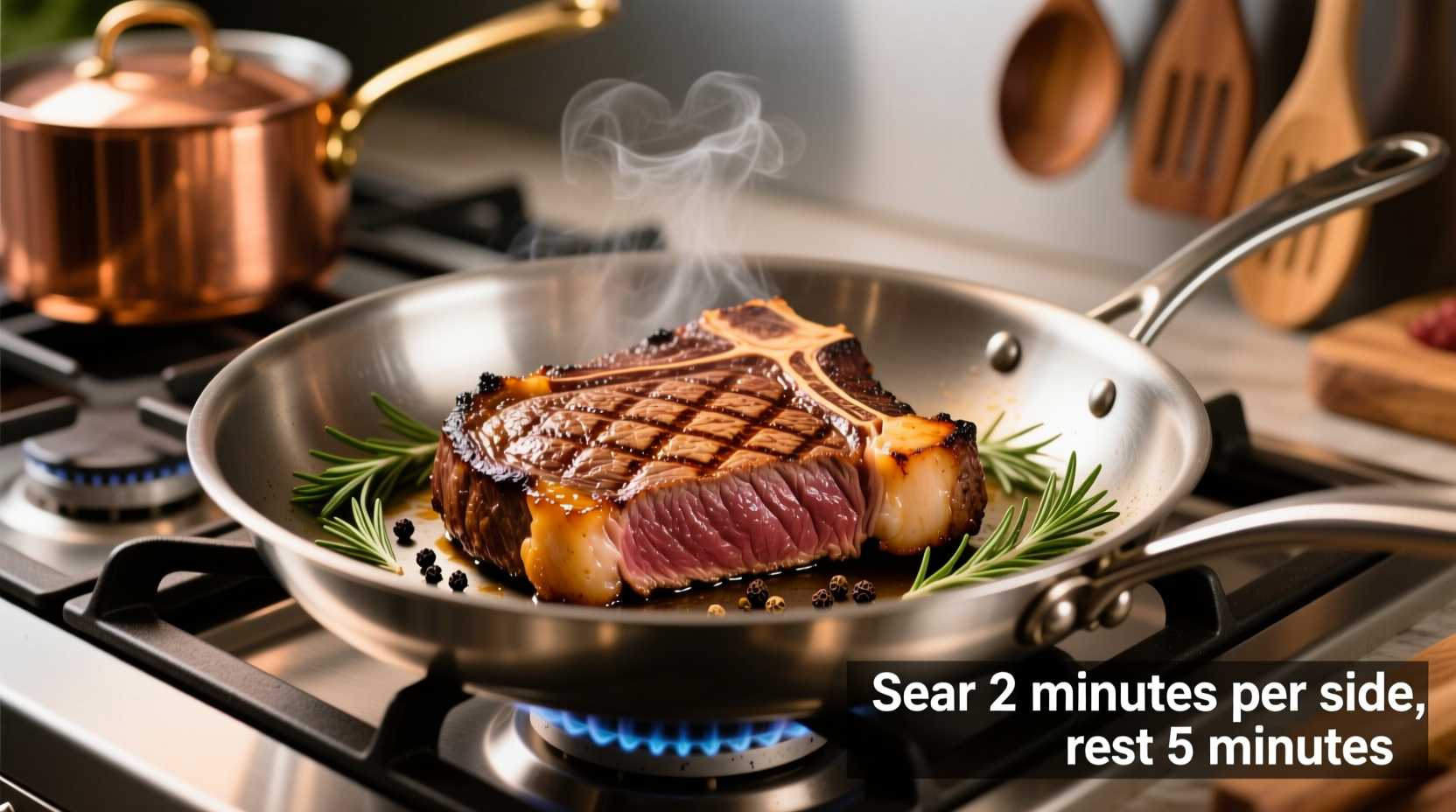Nothing beats a perfectly cooked steak with that professional-quality crust and tender interior—all achievable right on your stovetop. While many believe you need a grill or expensive equipment, the truth is your standard kitchen stove can produce exceptional results when you understand the science behind the sear and proper temperature management.
Essential Equipment for Stovetop Steak Success
Before you start, gather these kitchen essentials. You don't need specialty tools—just the right approach with what you likely already own:
- Heavy-bottomed skillet (cast iron or carbon steel preferred)
- Instant-read thermometer (critical for accuracy)
- Tongs (not a fork that pierces the meat)
- Heat-resistant spatula
- Wire rack for resting (prevents soggy bottom)

Choosing the Right Cut for Stovetop Cooking
Not all steaks perform equally well on the stovetop. Thicker cuts with good marbling deliver the best results when cooking indoors:
- Ribeye (1.5 inches thick) - Rich marbling creates natural basting
- Strip steak (New York) - Balanced fat content and firm texture
- Filet mignon - Leaner but requires careful temperature control
- Porterhouse/T-bone - Cooks evenly when properly positioned
Avoid thinner cuts under 1 inch, which easily overcook before developing a proper crust. The USDA Food Safety and Inspection Service recommends selecting steaks with consistent marbling for even cooking results (USDA.gov).
Preparation: The Critical First Steps
Proper preparation makes the difference between good and great steak:
- Dry the surface - Pat steak thoroughly with paper towels
- Season generously - Use coarse salt and freshly ground pepper 45-60 minutes before cooking
- Bring to room temperature - Let sit uncovered for 30-45 minutes (critical for even cooking)
- Preheat your skillet - Heat over medium-high for 5-7 minutes until smoking slightly
| Steak Thickness | Room Temperature Time | Why This Matters |
|---|---|---|
| 1 inch | 20-30 minutes | Prevents cold center when searing |
| 1.5 inches | 30-45 minutes | Ensures even cooking throughout |
| 2 inches | 45-60 minutes | Allows proper temperature gradient |
The Perfect Stovetop Cooking Technique
Follow this precise method for optimal results:
- Add 1-2 teaspoons of high smoke-point oil (avocado or grapeseed) to the preheated skillet
- Place steak in skillet away from you to avoid oil splatter
- Initial sear: 2-3 minutes without moving for maximum crust development
- Flip and sear second side for 2 minutes
- Add butter, garlic, and herbs to the pan during the final 2 minutes
- Tilt pan and baste continuously with melted butter
- Check internal temperature frequently during final cooking phase
This technique leverages the Maillard reaction—the chemical process between amino acids and reducing sugars that gives browned food its distinctive flavor. According to the American Chemical Society, this reaction occurs most effectively between 280°F and 330°F, explaining why proper preheating is non-negotiable (ACS.org).
Temperature Guide for Perfect Doneness
Use this precise temperature chart for accurate results. Remember that carryover cooking will raise the internal temperature 5-10°F after removal from heat:
- Rare: Remove at 120-125°F (final 125-130°F)
- Medium-rare: Remove at 125-130°F (final 130-135°F)
- Medium: Remove at 135-140°F (final 140-145°F)
- Medium-well: Remove at 145-150°F (final 150-155°F)
- Well-done: Remove at 155°F+ (final 160°F+)
Food safety experts at the Culinary Institute of America emphasize that carryover cooking continues the cooking process even after removal from heat, which is why removing steaks at lower temperatures than your target doneness is essential for perfect results (CIA.edu).
Resting: Why This Step Can't Be Skipped
Resting allows the juices to redistribute throughout the steak. Cutting too soon releases those precious juices onto your cutting board:
- 1-1.5 inch steaks: Rest 5-7 minutes
- 1.5-2 inch steaks: Rest 8-10 minutes
- 2+ inch steaks: Rest 10-12 minutes
Cover loosely with foil to retain heat without trapping steam. During this time, the internal temperature continues to rise slightly while the muscle fibers relax, resulting in a more tender, evenly cooked steak.
Common Stovetop Steak Mistakes to Avoid
Even experienced cooks make these critical errors:
- Moving the steak too soon - Wait for proper release before flipping
- Crowding the pan - Cook one steak at a time for proper sear
- Using the wrong oil - Extra virgin olive oil burns at high temperatures
- Skipping the thermometer - Guessing leads to inconsistent results
- Cutting too soon - Patience with resting time pays off in juiciness
Troubleshooting Your Stovetop Steak
Encountering issues? Here's how to fix them:
- Burnt exterior, raw interior: Heat was too high—reduce temperature next time
- Steak sticking: Pan wasn't hot enough before adding steak
- Uneven cooking: Thickness varied—choose more uniform cuts
- Excessive smoke: Turn on exhaust fan and open windows; consider lowering heat slightly
- Dry results: Overcooked or skipped resting time—use thermometer and rest properly











 浙公网安备
33010002000092号
浙公网安备
33010002000092号 浙B2-20120091-4
浙B2-20120091-4